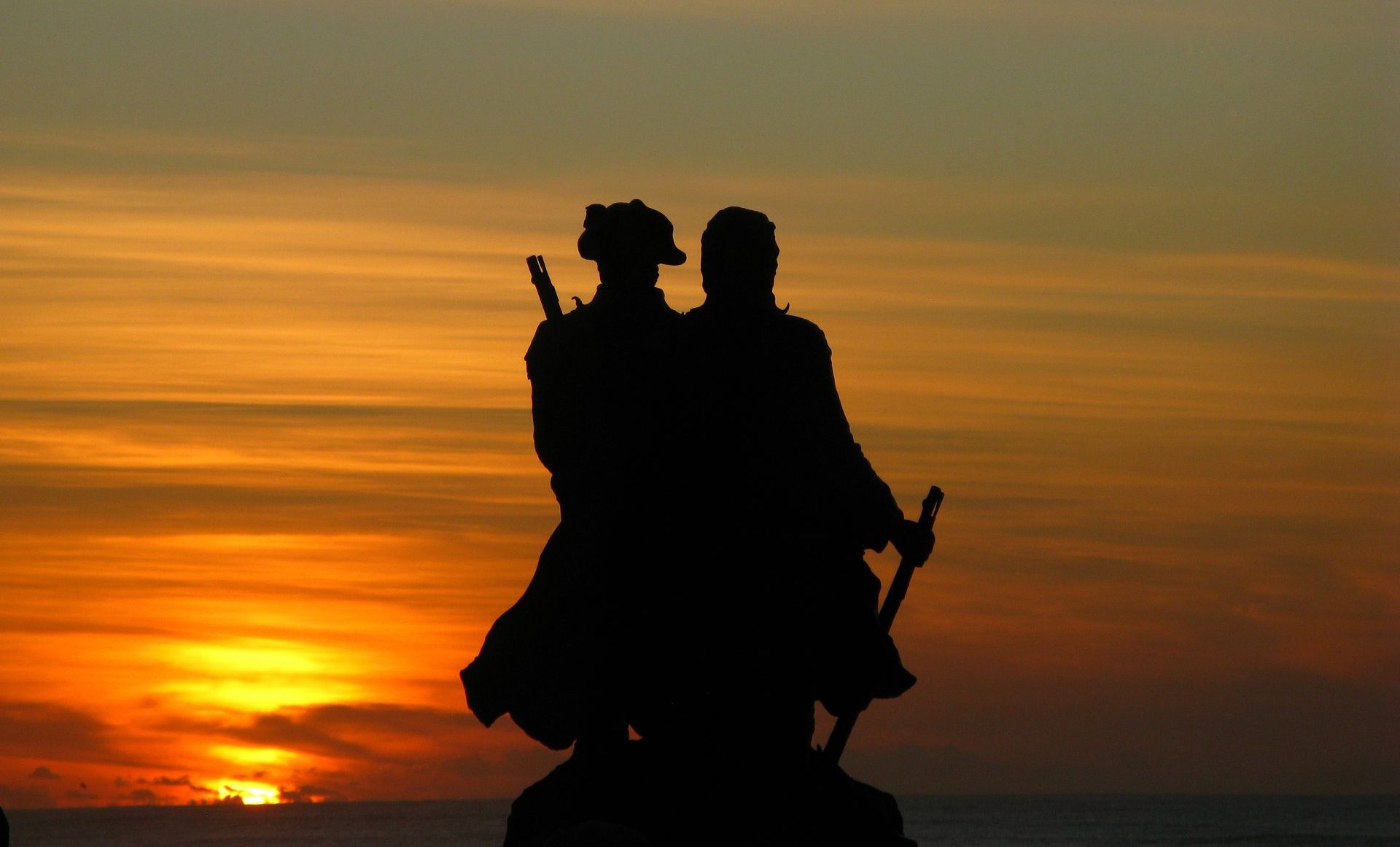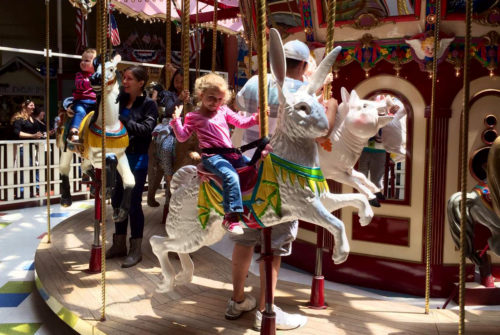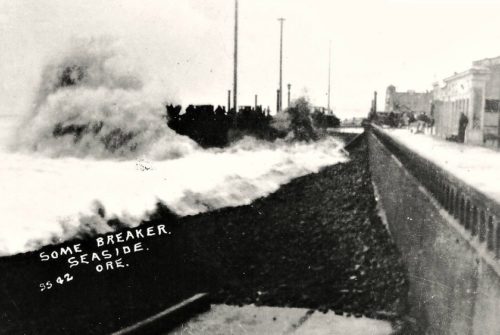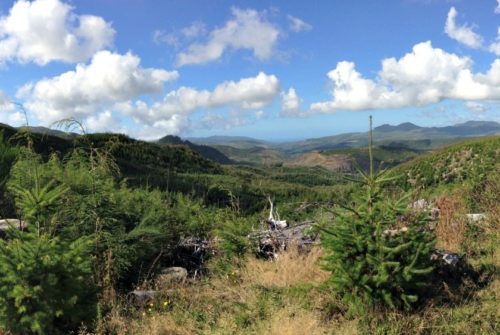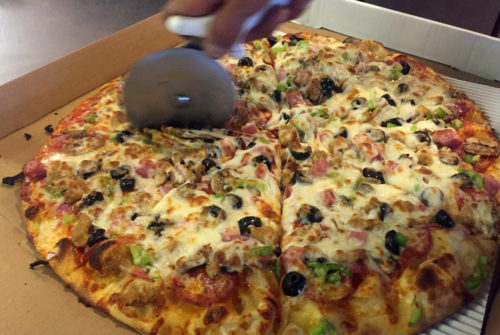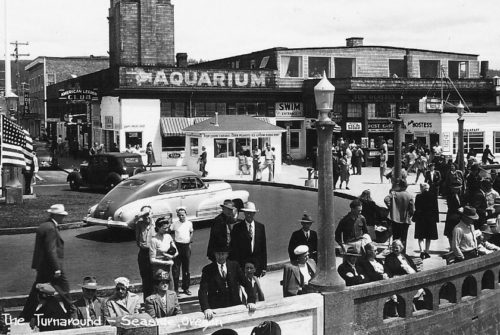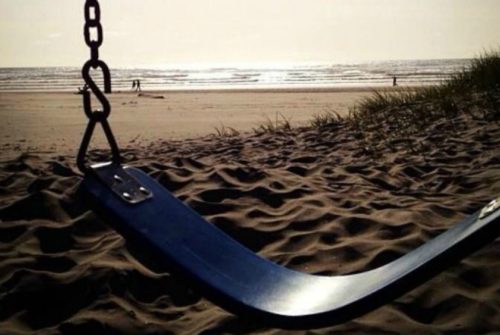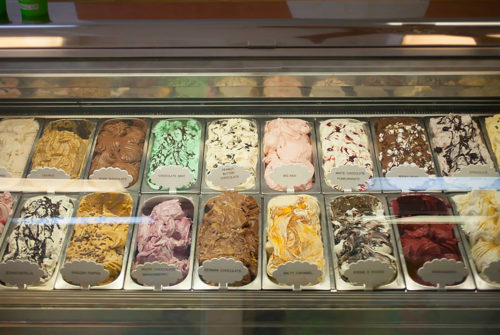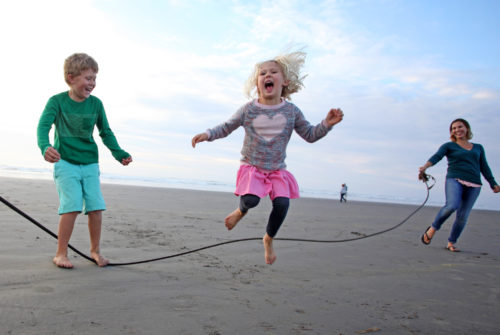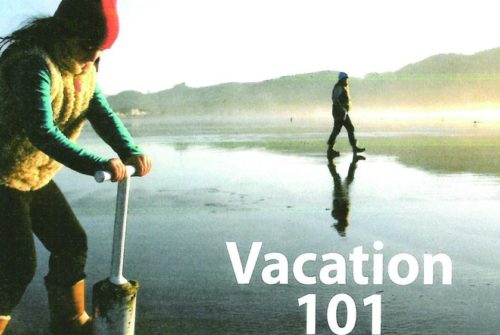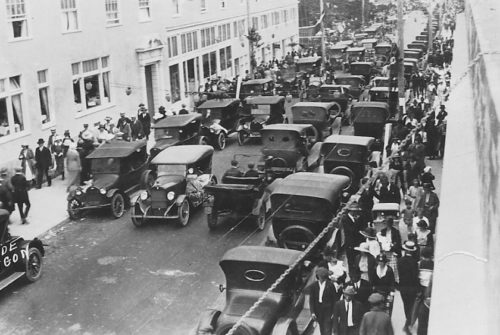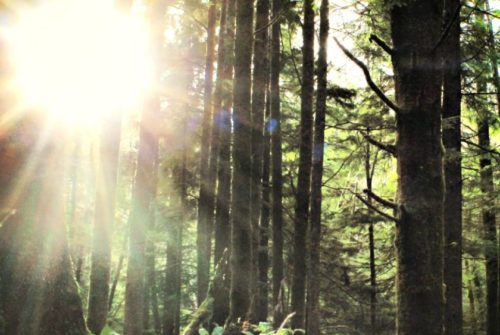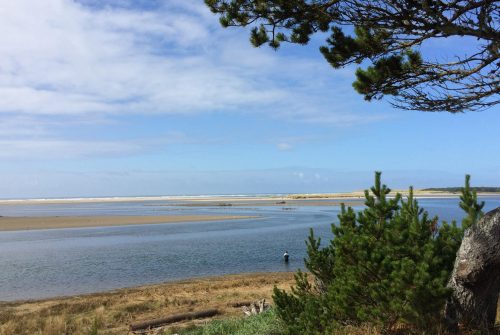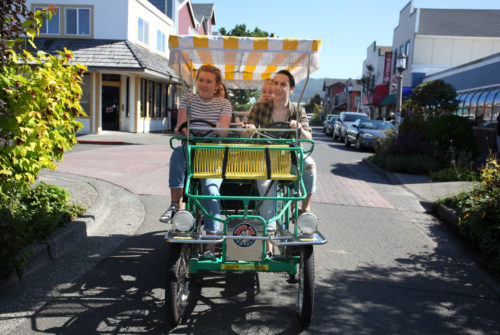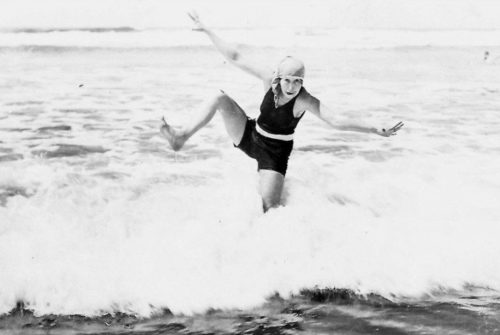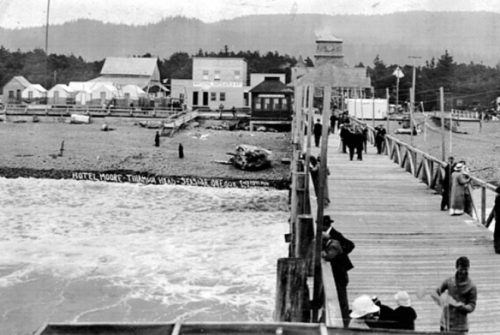The Lewis and Clark expedition reached the sea near Seaside.
Seaside has one of the most compelling stories you’ll find anywhere in the Pacific Northwest. Read on to learn about the original Native American inhabitants, the visit by Lewis and Clark, the founding of the town, the attack by the Japanese during WWII, riots, and even tsunamis.
Before European settlement, the land that is now Seaside was home to the Clatsop Tribe. For millennia, it subsisted on a diet of seafood, game, berries, and roots. But fur traders and explorers brought diseases with them, and a deadly smallpox outbreak would eventually kill most of the Clatsop population. By the time the expedition of Meriwether Lewis and William Clark arrived, just 250 members of the tribe remained.
When Lewis and Clark reached the Pacific Ocean in November of 1805, they set up camp north of Seaside by the mouth of the Columbia River. In January of 1806, a few members of the expedition traveled south to set up a salt works, a place where ocean water could be boiled to harvest salt. The salt was essential, as the expedition had no other way to cure its meat. Today, you can visit a re-creation of the salt works on the exact location of the original.
After Lewis and Clark, the region slowly grew, and the town of Seaside was established in 1899. Early on, it was a place for tourists to experience the coast. From the 1920s to the 1940s, Seaside was a must-play stop for musicians on the West Coast, with Duke Ellington and Glenn Miller among the many top acts to play in the tiny town. As the old clubs closed, new ones opened and Seaside continued to be a music mecca for bands from all around the Pacific Northwest.
Seaside had its own taste of the turbulent 1960s when a riot broke out in the summer of 1962. The initial cause appeared to be a fight between two teenagers, but the combination of boredom, anger at the cancellation of a concert, alcohol, and a mob mentality fueled a riot. The fire department of Seaside responded by hosing down the crowd, but that didn’t stop them. Firefighters were injured, hoses were cut, and fire truck keys were stolen. Eventually the state police and the national guard were called in to restore order.
On the evening of March 27, 1964, the most destructive tsunami to hit the United States flooded parts of Seaside. The 9.2-magnitude earthquake hit near Alaska and sent waves down the West Coast. According to stories from the era, some of the town’s locals were dancing at a club in town when they noticed that water was rising to their ankles. Thinking a pipe had burst, the dancers went outside to see water streaming through town. Today, you’ll still find long-time residents who can recall living through the experience—and they are usually more than willing to share stories.
That includes Gloria Stiger Linkey, a local historian who first moved to Seaside in 1937—and few know more interesting facts about the town than Gloria. Growing up in the town, moving away for a bit, and then returning, Gloria’s experience with Seaside has helped make her an expert. Working as a tour guide for cruise ships that come into Astoria, she is also a speaker, a tour guide in town, and the author of the book A Town Called Seaside. She was also living in town during one of the most famous events in Seaside history and witnessed it firsthand.
As crazy as the other events that have occurred in Seaside may be, June 21, 1942, is the year that stands out the most. Six months after Pearl Harbor, the town of Seaside witnessed the shelling of Fort Stevens by a Japanese submarine.
“I remember the night Seaside was under attack,” Gloria says. “There were no warnings and no sirens. We went out on the Promenade and could see flashes and hear the booms. Within seconds, MP jeeps roamed the town telling people to go inside. We were under attack and a Japanese Sub was just six miles south of Fort Stevens!”
After passing under a fishing fleet, the submarine emerged from the depths and started firing in the direction of the fort. Hidden from view, the fort sat silently, not wanting to let the enemy ship know its exact position. While there was no significant damage from the shelling, uneasiness settled over town. Up until that point, the war hadn’t impacted the town much. Afterward, blackout rules became strictly enforced, air raid drills were held, and the Tillamook Lighthouse even went dim. In 1943, it was common for Seaside residents to see blimps flying over the beach, as there was a station in Tillamook to monitor the shore and search for subs.
“Up until the point of the attack, the war didn’t impact the town much,” Gloria says. “Some things had changed, but the community was strong. After the war came to Seaside, we all realized we were not prepared to fight. Blackout rules then became strictly enforced and we had air raid warnings frequently.
“During the war years, we were united in one cause,” she continued. “It was not too much fun walking home in pitch dark, but we learned a greater appreciation for neighbor. We traded rations with our neighbors, bringing an unrivaled closeness to Seaside.”
To learn more about the fascinating history of Seaside, Gloria recommends heading to the both the Seaside Museum and Historical Society and Fort Clatsop, which was the winter encampment of the Lewis and Clark expedition. She also encourages a trip to Fort Stevens, as it has a complete room dedicated to the Japanese attack. There’s even more information on the attack at the Columbia River Maritime Museum in Astoria.
Finally, to truly get to know Seaside’s history, see it today. Walk Broadway, where you can get the feel of the people and feel the spirit of the town. Walk the Promenade, feed the seals at the aquarium, and explore the shops in the buildings that have been around for generations. The town has more than a century’s worth of stories to tell.
Written by Douglas Scott in partnership with City of Seaside Visitors Bureau.
